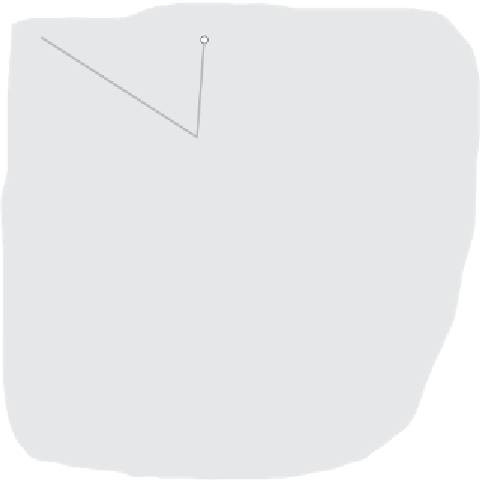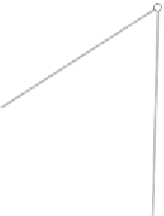Global Positioning System Reference
In-Depth Information
all the triangulation points between
A
and the baseline. The statistics of
triangulation were worked out by Gauss, who gave us the least-squares
method for estimating positions from imperfect data. A triangulation sur-
vey yields the least magnitude of error if a
control network
—a mesh of large-
scale triangles—is first set up. From this network, points can be filled in
inside the control network, a method known as
resectioning
. In this way a
coarse framework, a skeleton, of the land area to be surveyed is firmly
established, and then fine scale is superimposed—the flesh on the bones.
Figure 3.20 provides a simple illustration of some of the basic ideas of
triangulation. Two forest ranger stations,
A
and
B,
are separated by a known
distance
l
. The line between them is a triangulation baseline. A forest fire is
spotted beside a trail at
C
. The rangers can radio in the direction of the
forest fire (angles
a
and
b
), from which the location of the fire can be fixed
by triangulation. In figure 3.20 the error in estimating the angles is e; that
is, the rangers are assumed to estimate angles to within e of the true angle.
FIGURE 3.19.
Triangulation from a known baseline,
BB
%
. (a) A chain of triangles leads
to the point
A
. From the known length of the baseline and the geometry, the distance
from
A
to
B
can be found. (b) Braced quadrilaterals cover the same area. This in-
volves more work but is more accurate because intermediate measurements are
cross-checked.






























